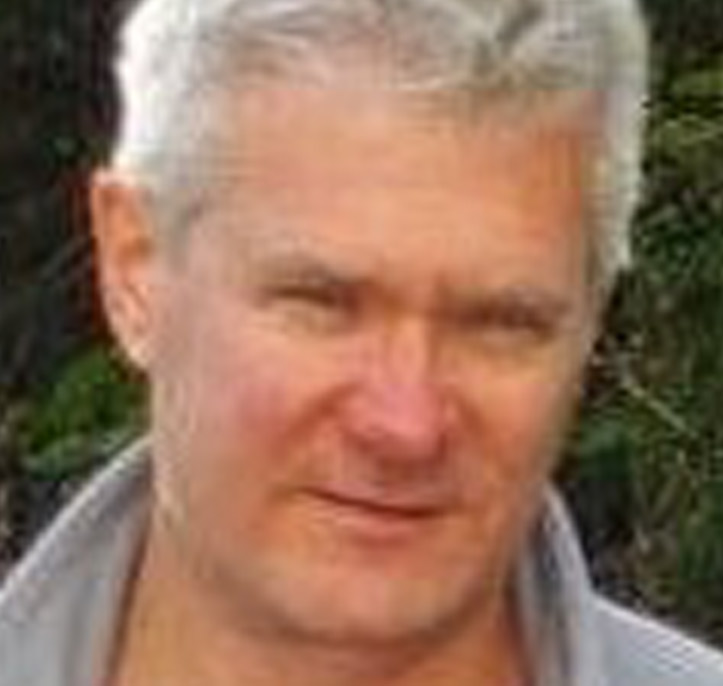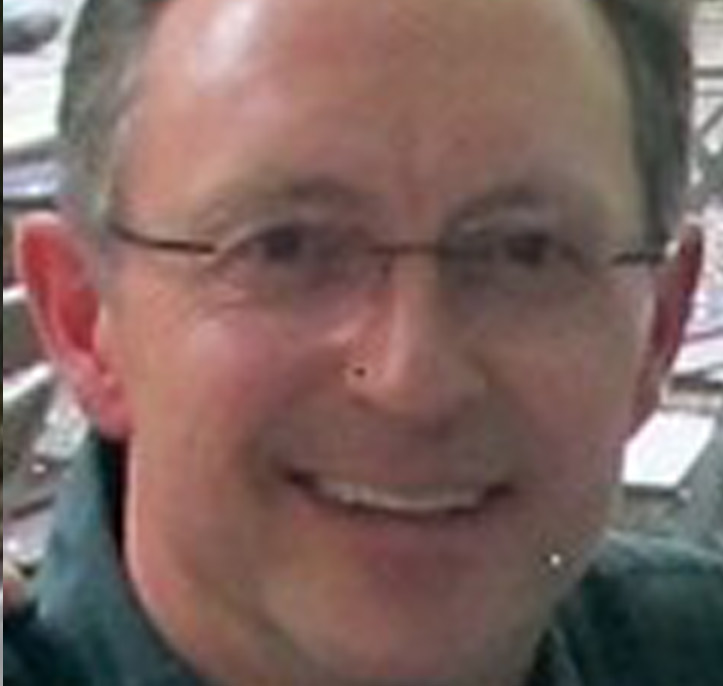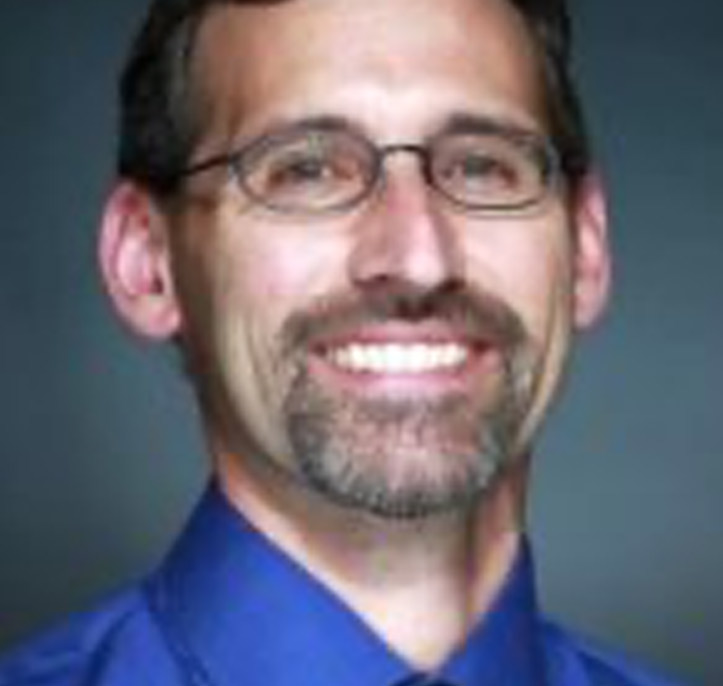2013 SMART Edmonton
April 3, 2013
SMART Remediation talks have focused on innovative technologies for remediating contaminated sites, approaches for site characterization, project case studies, regulatory and industry perspectives, and other related topics.

The 8th SMART Remediation conference was held in Edmonton on Wednesday, April 3rd, 2013. Details on the speakers and presentations are provided below.
Speakers

Perry D. Gerwing, B.S.A., M.Sc.,
Earthmaster Environmental Strategies Inc.
Phytoremediation of Salt and Petroleum Hydrocarbon Impacted Soil
- Bio |
- Abstract
- | Presentation
Perry D. Gerwing, B.S.A., M.Sc.
Perry D. Gerwing, B.S.A., M.Sc., is a specialist in reclamation and contaminated site assessment and remediation. He has worked as an environmental specialist for large oil and gas corporations and environmental consulting firms for over 25 years. He has co‐authored and published many scientific papers and as President of Earthmaster Environmental Strategies Inc., an environmental consulting firm, has spent a number of years developing and implementing successful phytoremediation programs for clients.
Phytoremediation of Salt and Petroleum Hydrocarbon Impacted Soil
Based on extensive chemical and biological research, we have successfully developed and implemented plant growth promoting rhizobacteria (PGPR) enhanced phytoremediation systems (PEPS). The scientifically advanced phytoremediation systems we deploy remove petroleum hydrocarbons (PHCs) and salt from soils. PEPS provide large amounts of root biomass in impacted soils, which promotes growth of rhizosphere microorganisms. The root and rhizosphere biomass allow rapid partitioning of contaminants out of the soil, and their subsequent uptake and/or metabolism by microbes and plants. This results in degradation of PHCs in soil and large amounts of biomass for sequestration of salt into plant foliage. We have deployed PEPS at over 35 full‐scale sites in Canada. PEPS, when deployed by our trained scientists, will result in PHC and salt remediation to Tier 1 standards. Not only is this a green solution for remediation of impacted sites, but the costs for PEPS are less than half the costs associated with landfill disposal. Between 2007 and 2012 we have deployed PEPS at more than 25 PHC impacted sites in Alberta, British Columbia, Ontario, Manitoba, the Northwest Territories and Quebec. At all sites we achieved ~ 35 % remediation per year of PHC from soil (mostly F2, F3 and F4). The first 7 sites treated have met Tier 1 standards while 18 other sites are being treated and are on target to reach remedial endpoints within an overall 2 to 3 year treatment period. Beginning in 2009, we initiated full scale deployments of PEPS at 13 salt impacted sites in Saskatchewan, Alberta, Manitoba and the Northwest Territories. PGPR greatly enhanced plant growth on the salt impacted soils, allowing excellent plant growth with soil ECe’s up to 25 dS/cm. Furthermore, the plants (both grasses and cereals) take up sufficient amounts of salt to result in 10 to 20 % remediation per year. Importantly, we have already achieved salt remediation to regulatory targets at 2 of the sites. We have an on‐going research program to improve PEPS. One aspect of this work is to properly maintain the PGPR currently utilized and to isolate new, more active PGPR. We are refining the CCME PHC analytical method to make phytoremediation and other green in situ remediation technologies more efficient. We are also using Tier 2 toxicity end points at a research level to assess when soil becomes non‐toxic during PEPS treatment – results indicate this will occur prior to meeting Tier 1 criteria. Our work with PEPS has shown that it is very effective for treatment of a wide variety of PHC and salt impacted sites (including sites with co‐contaminants).

Todd Herrington,
Regenesis
Remediation using In Situ Chemical Oxidation and Accelerated Anaerobic Biodegradation
Todd Herrington
Mr. Herrington provides remediation technology selection expertise, engineering design and oversight services to Regenesis clients in the Western U.S. and Canada. Mr. Herrington has over 15 years of environmental remediation experience and has been with Regenesis since 2004. Mr. Herrington is an expert in in situ bioremediation and in situ chemical oxidation (ISCO) and has been involved in the design of implementation of hundreds of contaminated site remediation projects during his tenure at Regenesis. He earned his B.S. in Civil Engineering from Colorado State University and his M.S. in Environmental Engineering from the University of Cincinnati. Mr. Herrington is also a Registered Professional Engineer (P.E.) in his home state of Colorado.
Remediation using In Situ Chemical Oxidation and Accelerated Anaerobic Biodegradation
The individual use of in situ remediation technologies such as microbially mediated enhanced anaerobic biodegradation (reductive dechlorination) and chemical destruction based in situ chemical oxidation (ISCO) for the treatment of chlorinated compounds has been widely documented and accepted with varying degrees of success. Due to the known limitations of each of these approaches (Bio vs. ISCO), the practice of combining or integrating these two technologies is emerging as an effective strategy for optimizing chlorinated contaminant treatment. More specifically the use of a catalytic ISCO reagent applied in sequence with a staged‐release, electron donor microemulsion for enhanced anaerobic bioremediation has been shown to be successful at chlorinated sites. Perchloroethene (PCE), trichloroethene (TCE) and dichlorethene (DCE) in high concentrations (mg/L levels and above) can be destroyed effectively with ISCO. However, in most cases, ISCO is only effective at reducing mass, and in the case of a catalytic percarbonate based reagent create highly aerobic conditions for some time following injection. Post‐ISCO application, chlorinated solvents can linger on at low levels (< 1 mg/L) in the dissolved‐phase. To target residual dissolved‐phase concentrations, the use of enhanced anaerobic dechlorination is a compatible and efficient follow‐on application to ISCO to reach treatment goals. Timing is key in going from aerobic conditions created by ISCO to an anaerobic biodegradation process. In this case the use of a percarbonate‐based catalytic ISCO agent requires some re‐acclimation time for the aquifer to buffer the ISCO‐induced high DO, ORP, etc. Subsequently the application of a staged‐release, microemulsion electron donor can be completed. This abstract will discuss the details of this process as well as performance based case study documentation of its success.

Gordon H. Bures,
Frac Rite Environmental Ltd.
Using Environmental Fracturing To Achieve Sustainable Remediation In Difficult Lithologies
- Bio |
- Abstract
- | Presentation
Gordon H. Bures
Gordon Bures is a professional engineer, co-founder and Principal at Frac Rite Environmental Ltd. based in Calgary, Alberta, Canada. He earned a Bachelor of Science Degree in Geological Engineering at the University of Manitoba in 1985, and a Master of Environmental Engineering Degree at the University of Alberta in 1993. Gordon is a seasoned practitioner with 25 years experience in the in situ design and implementation of remediation systems at contaminated industrial, commercial, and municipal sites across Canada, the USA, Europe, Asia, and Africa. For the past fifteen years, he helped develop and commercialize in situ remediation technologies and is a co-patent holder of the BIO FRAC™ process with industry colleagues. His current focus is on business development and the implementation of advanced in situ remediation technologies across Canada, the U.S.A, and overseas markets.
Using Environmental Fracturing To Achieve Sustainable Remediation In Difficult Lithologies
The effectiveness of commonly used in situ approaches to site remediation in North America, and indeed much of the world, can be seriously undermined by a site’s inherent lithology. As a result, site remediation practitioners around the world are increasingly turning to environmental fracturing as a means of increasing contaminant recovery rates or emplacing significant masses of treatment amendments into affected soils and bedrock. This presentation provides an overview of how environmental fracturing technologies overcomes the limitations of in situ remediation in low permeability lithologies, and provides practitioners with a guide to the application of environmental fracturing, based on 17 years of project experience in jurisdictions ranging from across North America to Europe, Africa, and Asia. Two innovative case studies are presented to showcase the integrated and synergistic use of innovative fracture-enhancement techniques for attaining sustainable and cost-effective remediation for petroleum hydrocarbons and chlorinated solvents. Physical, biological and chemical (reductive and oxidative) treatment technologies are showcased in the context of both subsurface extraction and delivery techniques to optimize contact with contaminants for their conversion to innocuous and natural end products. Examples of remediation technologies in challenging geologic settings and operationally constrained sites are provided to showcase their versatility and small site profile. Complimentary remedial verification tools are introduced to validate and confirm the effective treatment of subsurface soil and groundwater contaminants to achieve remedial goals. The implications of the application of environmental fracturing within the remediation industry are assessed in the context of cost benefits for site owners, efficacy gains for owners’ engineers, and enhancing environmental sustainability for communities.

Darryl Nelson,
Nelson Environmental Remediation Ltd.
Chemical Considerations in the Thermal Desorption Remediation of Soils
- Bio |
- Abstract
- | Presentation
Darryl Nelson
Darryl R. Nelson, CEO and President, founded Nelson Environmental Remediation Ltd. in 1993 ( www.nerglobal.com ) as an Alberta-based company specializing in the cleaning of soils that have been contaminated with organic compounds, particularly petroleum hydrocarbons (e.g., drill sites, well-head areas, flare-pits, oil pipeline ruptures, tank farm areas, manufactured- gas plant (MGP) sites, etc.). Built on extensive prior experience in oilfield road construction in Alberta’s oil-patch, NER can mobilize to jobsites at remote-locations worldwide, and is fully self- sufficient regarding trucking, heavy earthmoving equipment, thermal desorption units (TDU plants), fuel, water, crew accommodations, catering, transport, etc. For overseas jobs (e.g., Hawai’i, Spain, Nigeria, Albania, Iraq), equipment and plants are either barged or shipped from Seattle, WA, or out of Houston, TX. NER has twenty years of experience in mobile ex situ thermal desorption for the decontamination of PHCs-impacted soils (e.g., crude oil, diesel, jet fuel, gasoline, gas-well condensates, etc.). NER decontaminates soils of all kinds by means of mobile TDUs, which can mobilize to practically any contaminated site anywhere in the world, particularly in remote-locations, year-round. NER has offices in Seattle, WA, and Minneapolis, MN, as well as the Corporate Head Office which is located in Spruce Grove, AB. Mr. Nelson studied Business at the Northern Alberta Institute of Technology (NAIT), and he lives near Spruce Grove, AB.
Chemical Considerations in the Thermal Desorption Remediation of Soils
As stakeholders become increasingly aware of the minutiae of all manner of relevant chemical considerations pertaining with each of the various soil remediation techniques presently available in the marketplace, increasingly can the proponents of every such technique expect to be asked what chemical and mineral changes might be being wrought upon the soils so treated, as well as the short and long-term implications for the site’s recovery/ecology/landscape. Here we consider the robust technique of Thermal Desorption, which employs thermal desorption units (TDUs) to reliably treat soils contaminated with a wide variety of organic compounds, and which routinely remediates such environmental liabilities down to well-below the regulatory soil concentration criteria (e.g., paraffinic and aromatic petroleum hydrocarbons (PHCs), commercial solvents, pesticides, etc.). From operational, emissions, and sustainability aspects, we are steadily considering some of the different kinds of chemistries that can reasonably be expected to be occurring inside our TDUs, and thus the effects of such on residuals entrained within the post-treatment output soils. While no irreversible mineral complement/inventory effects are expected on treating organics- contaminated soils by the technique of low-temperature thermal desorption, the site-specific mineralogy obtaining at each jobsite can indeed have an impact on the kinds of chemical reaction types that one can envisage to be likely to occur inside the rotary desorber drum. Induced molecular functionalizations and derivatizations can include: alkene generation (e.g., via heterogeneous catalytic cracking reactions on clay mineral surfaces under the hot, dry, anoxic conditions prevailing within the desorber); molecular structural dehydrations (e.g., via thermal condensation of hydroxy groups, and the elimination of water molecules, such as in the progressive charring/carbonization of carbohydrates); oxygenates generation (e.g., via partial oxidations and hydrolyses during the aqueous quenching stage and the prompt aerial exposure); and mechanochemical / tribochemical reactions (e.g., freshly-produced / exposed / excited inorganic mineral surfaces, particularly in the case of quartz-rich materials, that can have high surface energies and be chemically reactive in their own right and/or catalytically- active). Awareness of the different chemistries that can conceivably occur when thermally processing soils, and/or crushed rocks that have been contaminant-permeated, is useful for problem-solving on-the-job, in addressing clients’ queries, when regarding possible future environmental regulatory requirements, and as sustainability and ecological issues become increasingly significant among the factors being actively considered by clients and their insurers in their decision-making deliberations. Each and every soil remediation technique in the marketplace will of course have its own particular set of chemical likelihoods and expectations when considering the suites of side-products contained among the residuals remaining at the site, and here we present our consideration of several aspects of the technique of thermal desorption.

John Davis,
Gibson Energy Inc.
John Davis
Gibson Energy is a Growth-Focused North American Midstream Oil and Gas company. Since 1953 Gibson Energy has played a significant role in linking upstream producers with downstream refiners. At Gibson Energy, Health, Safety, Security & Environment are core business competencies and we are proud of our expertise in these areas.
Remediation Selection Process – An Industry Perspective
The purpose of this presentation is to share how corporate governance programs influence the selection of remediation/ risk management approaches for impacted sites. Using rural and urban sites as examples, the presentation will highlight how the company’s core values, social responsibility program, sustainability program, and regional business plans influenced the decision to implement specific remediation approaches.

Bruce Tunnicliffe,
Vertex Environmental Inc.
Using High Resolution Characterization for Detailed Real-Time Assessment of LNAPL and Dissolved Phase Petroleum Hydrocarbons
- Bio |
- Abstract
- | Presentation
Bruce Tunnicliffe
Mr. Tunnicliffe is President of Vertex Environmental Inc., and is an Environmental Engineer with years of experience designing and implementing remediation of chlorinated solvents and petroleum hydrocarbons. Having worked on many hundreds of in-situ projects, Mr. Tunnicliffe has extensive experience on innovated assessment tools and in-situ remediation techniques. Mr. Tunnicliffe holds a Master’s degree from the University of Waterloo, has authored many publications, and has presented at numerous conferences.
Using High Resolution Characterization for Detailed Real-Time Assessment of LNAPL and Dissolved Phase Petroleum Hydrocarbons
A common problem with remediation of petroleum hydrocarbons (PHCs) is a lack of understanding of subsurface distribution. Basic information is obtained using traditional boreholes and monitoring wells, but significant data gaps typically remain prior to commencement of remediation. Two new high resolution characterization techniques have been successfully used to define the location of PHCs in-situ, these are the Membrane Interface Probe (MIP) for dissolved phase contamination, and Laser-induced fluorescence (LIF) for free phase contamination (LNAPL – light non aqueous phase liquid). The MIP and LIF are powerful down-hole assessment tools that are used to provide semi-quantitative data on subsurface contamination. Advanced to depth by direct push methods, the surface of the MIP probe is then heated and the volatile contaminants volatilize and diffuse through a semi-permeable membrane and are subsequently transported to the surface for analysis. The LIF consists of a probe with a fibre optic cable that emits light through a window in the probe during direct push advancement. The PHCs in LNAPL fluoresce and the response is measured by the probe in real time. These real time, high resolution technologies provides very detailed information about the presence and extent of PHC impacts. During this talk, each technology will be briefly discussed, and a case study will be presented where both the MIP and the LIF were used prior to and during in-situ remediation of PHCs. This talk will present the pre-injection MIP and LIF results and showcase how the initial chemical oxidation design was altered based upon the MIP and LIF results. The MIP and LIF were remobilized to the Site during the in-situ program, these results will also be presented to show how the results were used to alter the design which resulted in efficient distribution of the oxidant and good destruction of the PHCs.